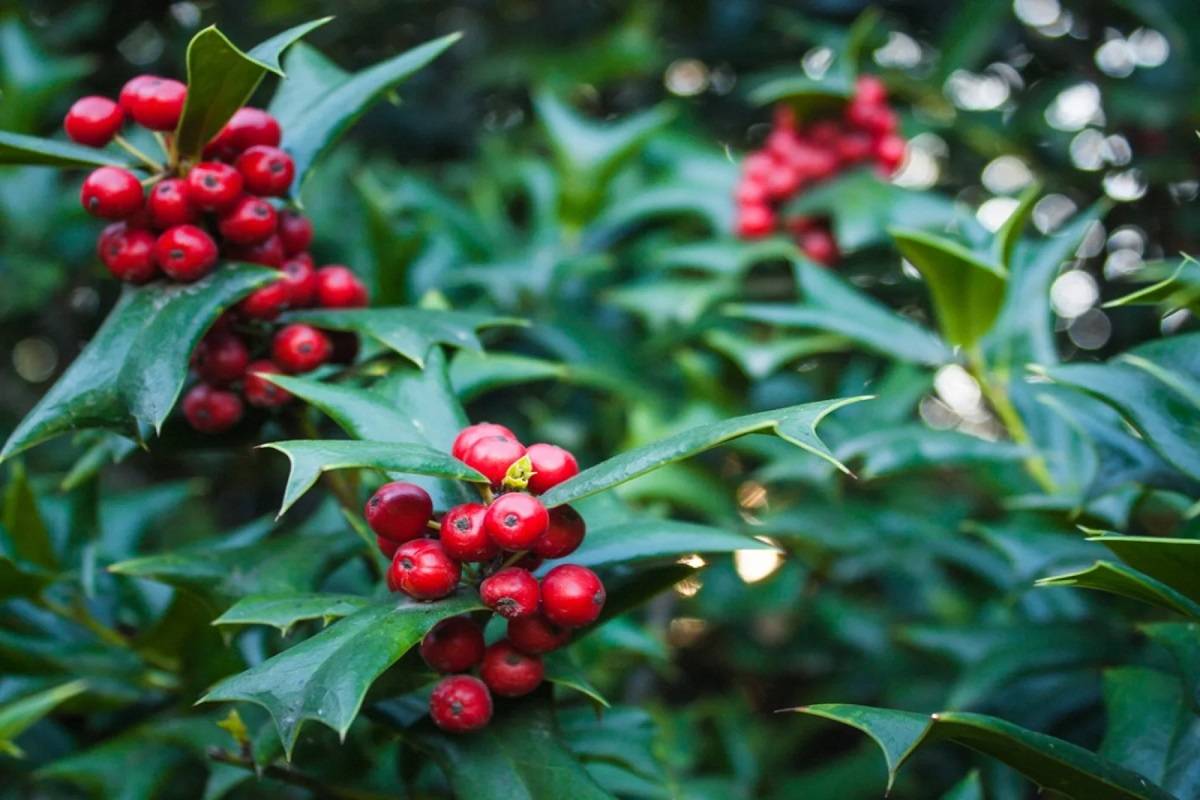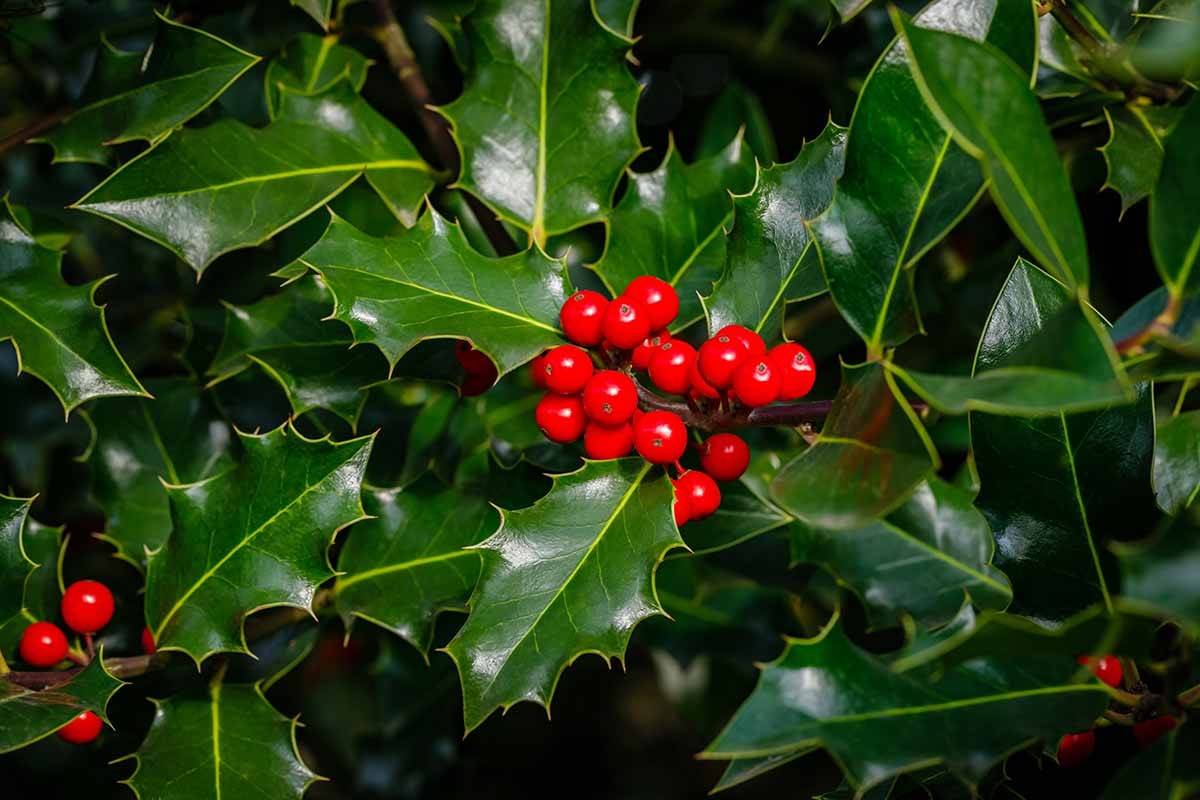
Holly, Ilex aquifolium, often bears brilliant red berries and dark green, spiky leaves. More than 400 different holly species from all over the world exist, each having a unique range of leaves and berries.
The holly (Ilex) genus includes tiny shrubs and big climbers, as well as a variety of leaf forms, textures, variegation patterns, and colorful berries. Holly has a life that extends far beyond the holiday season, even though it will always be associated with Christmas. It is simple to grow and looks beautiful in gardens as a trimmed shrub, hedge, or evergreen architectural showpiece.
How to Grow Holly Berries?
Holly can handle little shade but prefers a setting with six to eight hours of direct sunlight. If producing berries is your goal aim, bear in mind that female plants do best when planted in full light.
Pick a spot with loamy, acidic, wet, and well-draining soil. Consider taking a soil test to determine the pH of your soil and ensure that it is between 3.5 and 6.5.
Working a two-inch layer of peat moss into the top eight to twelve inches of the planting location can help your soil become more acidic if it is necessary.
Growing Advice
-
To encourage healthy berry production, plant where there is abundant light.
-
Ensure that the pH of the soil is between 3.5 and 6.5.
-
Water the plants when the top inch of soil dries out or every two weeks.
-
Use organic mulch to help moisture stay locked.

Maintaining and Pruning
Your holly will benefit from pruning if you want to keep it healthy and if you want to give it a certain shape. This tree naturally forms a pyramid shape, but you'll need to prune it if you want it to seem even more sharply pyramidal or have a different shape. Late winter, when the tree is dormant but spring is just around the corner, is the perfect time to prune.
This avoids sacrificing any established blooms or berries as a summer or fall trimming would, while yet allowing the wounds to heal when the tree starts to develop again.
The Cultivars to Choose
If you want to view those stunning berries, it's imperative to grow both male and female varieties that bloom at the same time. As suggested plantings, select one male and two female kinds that bloom at the same time. Within 40 feet of the female holly bushes, put a male holly. Only the female hollies will produce fruit, thus there has to be a male variety for the bees to pollinate. The habits of male plants differ from those of female plants. They can grow in a cluster with the females or as a distinct landscape shrub.
Fast Growing Trees also offers the option of ordering a species plant. The height and width of this holly are 15 to 20 feet and 12 to 15 feet, respectively.
By growing neighboring pollinator-attracting plants, you can improve the fruit set. By lowering pesticide application rates and increasing plant variety, we can safeguard our pollinators.
Controlling Insects and Diseases
Your I. opaca plants can suffer from several problems. These issues won't likely lead to the demise of your holly if you maintain healthy bushes, but they are still important to be aware of.
Pests
One of the most noticeable pests to watch out for is the natural holly leaf miner, Phytomyza ilicicola.
One-eighth of an inch long black flies, adult leaf miners are small. Females lay their eggs inside the leaves, giving the greenery around them a rough appearance. Additionally, adult flies pierce the leaves to consume the sap.
Spider mites can also be an issue since they feed on the undersides of holly leaves, particularly the southern red mite, or Oligonychus ilicis. Fortunately, once they start spinning their distinctive webbing in the vegetation, they're simple to identify.
To prevent the mites from returning, remove the diseased leaves and treat the entire shrub with neem oil every five to seven days.
Diseases
Be on the alert for leaf spots and powdery mildew when it comes to diseases.
Leaf spot often referred to as tar spot, is brought on by the fungus Coniothyrium ilicinum. Small yellowish-brown patches that appear on the surface of leaves in the winter or the first few weeks of spring are the consequence of infection.
By summer, the spots have turned reddish-brown, and by fall, they have changed to the tarry black dots for which this condition is famous.
Leaf spot is unattractive but not harmful to the plant. To help prevent infection, remove any damaged leaves and apply copper fungicide to newly growing foliage.
Holly can be affected by powdery mildew, which leaves the distinctive, fine white fuzz all over the leaf. To help remove powdery mildew, get rid of the damaged leaves and apply a copper fungicide.
Best Uses
Planting holly as a hedge, border, or natural barrier around your home is one of the greatest uses for it. The prickly leaves will provide you with some solitude and some protection from attackers, and you'll get to see the colorful clusters of berries every fall and winter.











